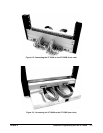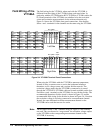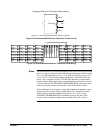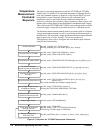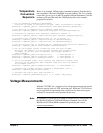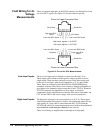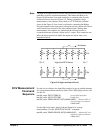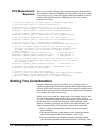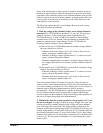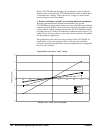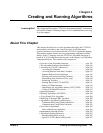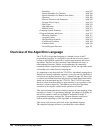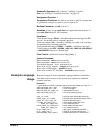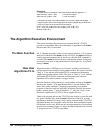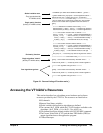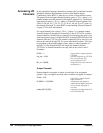
Advanced Programming with the VT1529B 179Chapter 5
Some of the mechanisms by which previous channels interfere are micro-
thermals in semiconductors, dielectric absorption in materials and simple
capacitance. The cumulative effects of all of the mechanisms from previous
channels result in errors on the current channel. A simple model of the error
is not possible. It should also be noted that not all of the effects have the
same polarity or time constant.
The following section describes several things that can be done to keep
switching crosstalk to a minimum.
1. Limit the voltage of the channel(s) before a low-voltage channel is
measured. The VT1529A/B can measure 0.5 V and 1 µV on successive
channels. However, if this is done at the fastest scanning rate, the
VT1529A/B must try to slew 114 dB in less than 40 µs and switching
crosstalk errors will occur. Instead, order the channels to minimize the
channel-to-channel input voltage change. For the VT1529A/B, the
following channel sequences are recommended:
• If the scan list on a VT1529A/B includes an excitation voltage channel,
the order should be as follows:
-- Channels with small voltages (µV or mV level) on the low-level
inputs: strain gages, thermocouples, etc.
-- Channels with large voltages (greater than 0.1 V) on the low-level
inputs: reference thermistor voltages.
-- Channels using the high-level inputs: excitation voltages, high-level
dc voltages. Short the low-level inputs on these channels to chassis
ground.
• If the scan list on a VT1529A/B does not include an excitation voltage
channel, the order should be as follows:
-- Channels with large voltages (greater than 0.1 V) on the low-level
inputs: reference thermistor voltages.
-- Channels with small voltages (µV or mV level) on the low-level
inputs: strain gages, thermocouples, etc.
If an unconnected channel is included in a scan list, short the inputs to
chassis ground. An unconnected input will drift to the full-scale input and
can cause switching crosstalk errors. Also, shorting the low-level inputs of
channels used for high-level measurements to chassis ground is
recommended – the VT1529A/B always switches both the high-level and
low-level inputs and then selects between the two inputs. Shorting the
low-level inputs on these channels will prevent drifting of the amplifier for
the low-level inputs during high-level measurements.
2. Minimize the time the system remains on a large signal (> 0.1 V) on
the low-level inputs. Leaving a channel on a large voltage will “soak” the
system, but quickly scanning through a high voltage will cause minimal
error. The longer the system soaks, the longer it takes to discharge. For
example, at the fastest scanning speed of the VT1529A/B (40 µs if only one
channel in the middle of a scan is 80% full scale (0.4 V)), then the effect on
the following channel at near 0 V is an offset of about 2.4 µV. But, if many
channels are scanned at 0.4 V followed by a channel near 0 V, then the effect
is about 4 µV. The key point to remember is to avoid soaking the system
unnecessarily.



